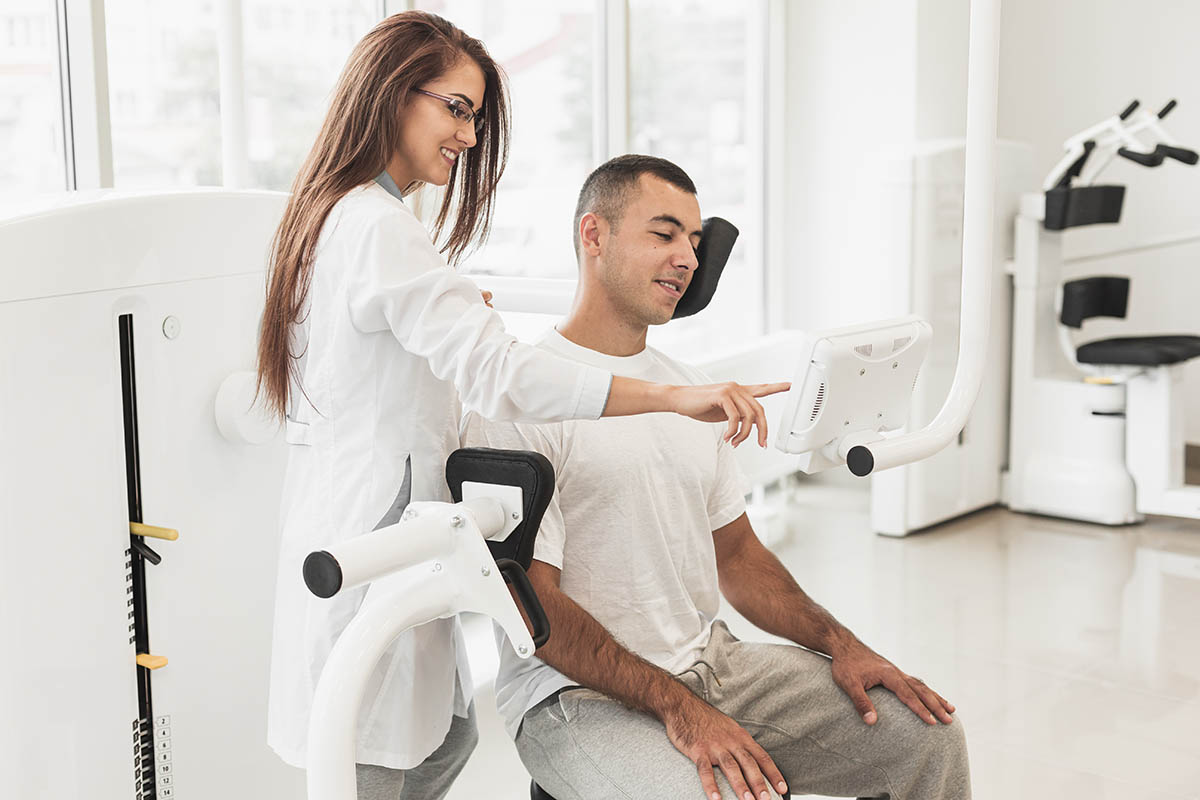Introduction
Physical therapy emerges as a beacon of hope for individuals navigating the challenges of injuries, chronic conditions, and post-surgical recovery. This article embarks on a detailed exploration of the different types of physical therapy methods, spotlighting both time-honored techniques and new approaches. We will journey through the therapeutic landscape, offering insights and guidance for those on the path to enhanced physical well-being.
Overview Of Physical Therapy
The domain of physical therapy is a dynamic amalgamation of science and compassionate care, aimed at mitigating pain, fostering function, and endorsing overall physical health through a bespoke mix of techniques. This field is pivotal in diagnosing physical anomalies, bolstering mobility, and forestalling subsequent injuries, embodying a holistic healthcare methodology.
In 2021, there were 264,526 physical therapists in the US, with women making up 65.8% and men 34.2% of the workforce. With close to 600,000 professionals employed in the industry as of 2022, physical therapy extends its therapeutic reach to address a wide range of conditions. Most physical therapists in the US are white, accounting for 70.2% of the profession, with Latinos and Asians comprising the remaining numbers.
Here are some of the most common ways that physical therapy is able to save lives:
Pulmonary rehabilitation programs are vital for patients with lung conditions and heart failure, emphasizing exercise physiology and breathing techniques to enhance physical health. Cardiac rehabilitation supports recovery from heart attacks through exercise training and lifestyle counseling.
Neurological physical therapy is crucial for patients with spinal cord injury, brain injury, or any neurological disorder, focusing on restoring voluntary muscle control and enhancing mobility. For those with balance disorders or who have experienced a work-related injury, physical therapy offers strategies to regain stability and return to daily activities.
Electrical muscle stimulation and therapeutic exercises are instrumental in managing pelvic pain, and muscle weakness, and facilitating muscle recovery. Moreover, for geriatric patients or those with age-related conditions, physical therapy promotes active lifestyles and maintains independence.
Traditional Physical Therapy Methods

Traditional physical therapy methods encompass time-honored techniques that have been refined and proven effective over the years. These methods form the cornerstone of physical therapy, providing foundational approaches to address a wide spectrum of physical ailments and injuries. From manual therapy to therapeutic exercises, traditional physical therapy methods offer comprehensive solutions for pain relief, recovery, and improved mobility.
Manual Therapy
At the heart of traditional physical therapy techniques lies manual therapy, a hands-on approach that manipulates muscles and joints to diminish pain, amplify range of motion, and reduce inflammation. Techniques such as massage, mobilization, and manipulation, underpin manual therapy, providing direct benefits in patient comfort and mobility. This form of therapy is particularly effective for conditions like neck pain, spinal cord injury, and musculoskeletal conditions, where gentle, hands-on techniques facilitate tissue healing and pain relief.
Exercise Therapy
Exercise therapy represents a foundational element of physical therapy, aiming to fortify muscle strength, enhance flexibility, and boost endurance. Customized exercise programs, based on meticulous assessments, target specific improvement areas. From rehabilitative exercises for sports injuries and joint replacement surgery to therapeutic exercises designed for chronic diseases and neurological disorders, exercise therapy is crucial for long-term health and recovery.
Specialized Physical Therapy Techniques
Specialized techniques within physical therapy offer targeted interventions for specific conditions and patient demographics. Pediatric physical therapy caters to children with developmental delays, congenital disabilities, and cerebral palsy, focusing on enhancing motor skills and physical function.
Sports therapy is dedicated to treating and preventing sports-related injuries, while neurologic physical therapy aids individuals with neurological conditions like brain injury, and neurological disease, aiming to improve daily living and active lifestyles.
Innovative Physical Therapy Approaches
Innovation in physical therapy has led to the adoption of methods such as dry needling for muscle spasms, electrical stimulation for muscle strength and pain management, and aquatic therapy for gentle rehabilitation of various conditions.
Cold therapy and light therapy are also employed for their benefits in reducing inflammation and facilitating tissue healing. These approaches, along with the use of technology in virtual reality rehabilitation, signify the broadening scope of physical therapy treatments.
Choosing the Right Physical Therapy Method with Auto-Ness Physical Therapy

Auto-Ness Physical Therapy Services is committed to delivering personalized care, integrating both traditional and innovative therapies to construct tailored treatment plans. Our expertise spans a wide variety of conditions, including pulmonary disease, heart disease, and musculoskeletal injury, ensuring a comprehensive approach to rehabilitation.
Our plan of care is designed to address the unique needs of each patient, from acute injury recovery to management of chronic pain and chronic diseases. Contact us today for your needs in physical therapy in Scripps Ranch, San Diego.
Conclusion
Physical therapy, with its diverse methods of treatment, plays a pivotal role in the landscape of health care. By addressing a range of injuries and conditions—from musculoskeletal injuries and chronic pain to neurological conditions and rehabilitation after heart attacks—it empowers individuals to lead healthier, more active lives.
Auto-Ness Physical Therapy stands at the forefront of this field, offering customized, patient-centered treatment plans that leverage the full spectrum of physical therapy methods.
FAQs
What types of fitness are related to physical therapy?
Physical therapy encompasses various fitness activities aimed at rehabilitation and recovery, including strength training, flexibility exercises, balance training, and aerobic conditioning, tailored to address specific recovery goals and enhance overall well-being.
What are the benefits of physical therapy?
Physical therapy offers extensive benefits, such as pain reduction, improved mobility, injury prevention, and enhanced quality of life. It is pivotal in managing chronic conditions, aiding surgery recovery, and preventing future injuries through personalized exercise programs and education.
Does insurance cover physical therapy?
Insurance coverage for physical therapy varies by provider and policy. Generally, most insurance plans cover physical therapy services when deemed medically necessary, but it’s recommended to verify with your insurance provider and physical therapy clinic for specific coverage details and potential out-of-pocket costs.


